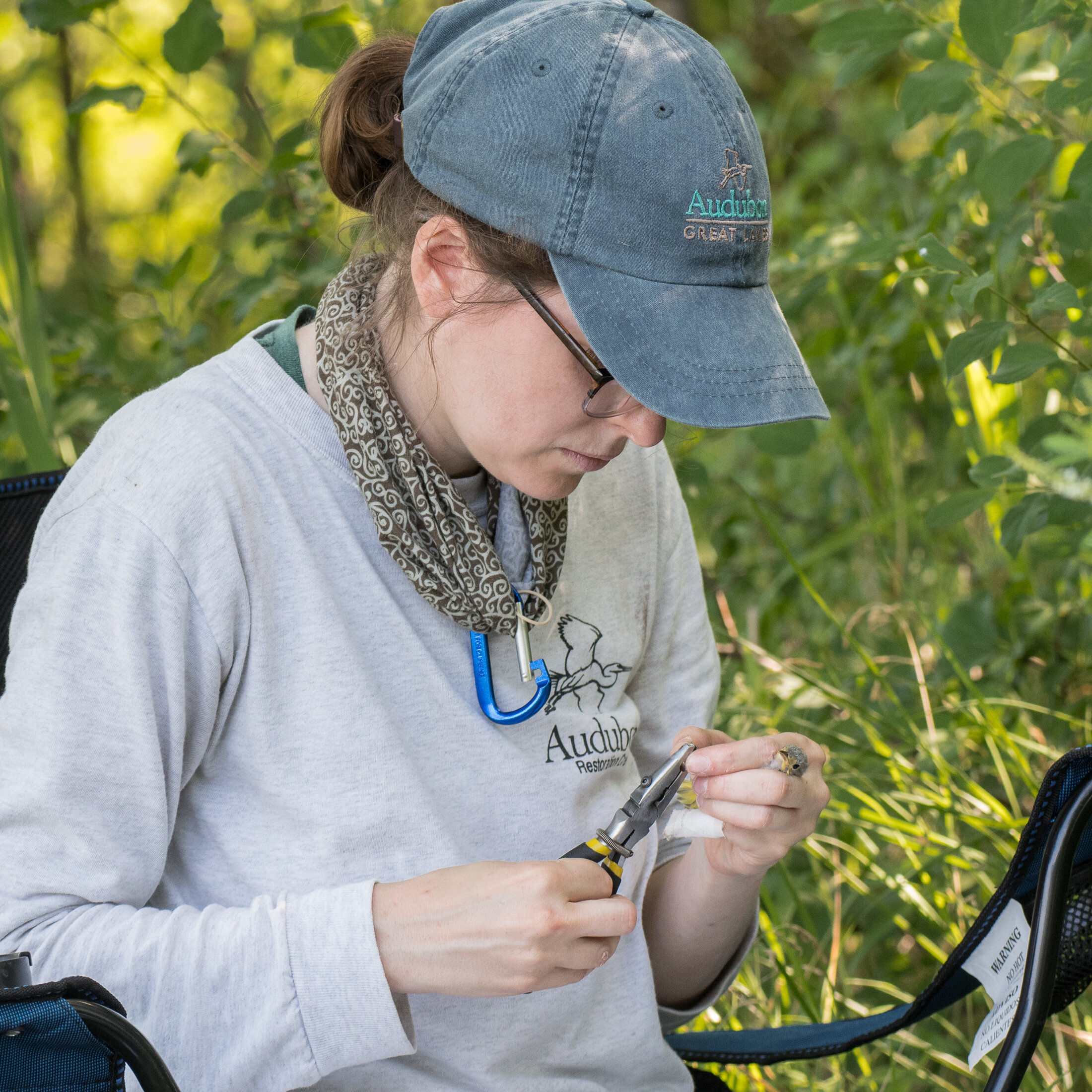Introducing the COS Big Marsh MAPS Bird Banding Station
Anastasia Rahlin taking notes on a Willow Flycatcher. Photo: Dan Lory
Chicago Ornithological Society is proud to announce the newest project as part of our conservation initiative in the Calumet region: a bird banding station located at Big Marsh Park in Chicago. The new Big Marsh bird banding station is part of the Institute for Bird Populations’ MAPS Program (Monitoring Avian Productivity & Survivorship), which deploys a standardized bird banding protocol for studying breeding birds. The Big Marsh MAPS station is run by three researchers from across Illinois – Stephanie Beilke, Conservation Science Manager with Audubon Great Lakes and board member of the Chicago Ornithological Society, Libby Keyes of Governors State University, and Anastasia Rahlin of the Illinois Natural History Survey – and offers us a glimpse into the lives of urban birds.
View from Big Marsh Park at sunrise. Photo: Stephanie Beilke
Big Marsh, a Chicago Park District site located on the city’s far southeast side, is part of the Lake Calumet Important Bird Area, recognized as one of the most important areas in the state for breeding wetland birds. Despite a history of industrialization and slag dumping (a byproduct of steel manufacturing) in the area, the park fosters a great diversity of birds, 243 species according to eBird. But relatively little is known about the lives of breeding birds in this post-industrial landscape. Are birds successfully breeding here? Are they returning year after year? Or are birds coming to nest but not producing many young?
Libby Keyes with a male Indigo Bunting. Photo: Dan Lory
Many of these questions can be answered through MAPS bird banding research. Through special permission from the Park District and permits from the federal Bird Banding Lab and the Illinois DNR, our team of bird banding experts have been authorized to use soft nylon mist-nets to passively catch birds, and then apply leg bands with unique numbered codes. While we have birds in hand, we can collect data on breeding condition and determine which species are breeding at any given time. By capturing juveniles, we can estimate how many young are born each summer. MAPS stations are designed to be long-term - by recapturing banded birds year after year we can measure survival and track bird populations over time.
Stephanie Beilke bands a juvenile Yellow Warbler. Photo: Dan Lory
Since this MAPS station is one of many stations across the continent, we can compare the data we collect at Big Marsh to other stations with similar species and habitats. If survivorship and productivity are relatively low, then this will help direct us to next steps for understanding why this is happening and what we might be able to do to counter threats that birds face in the urban-industrial landscape. We can also provide important feedback to the Chicago Park District about the status of breeding birds in the park, and how bird populations may change in response to changes to the habitat. In addition, we’re excited to use this opportunity to engage the local community with a close-up experience with Chicago’s breeding birds while communicating the importance of bird research and conservation.
We look forward to sharing our findings with you on the COS blog and on COS’s Facebook page!




